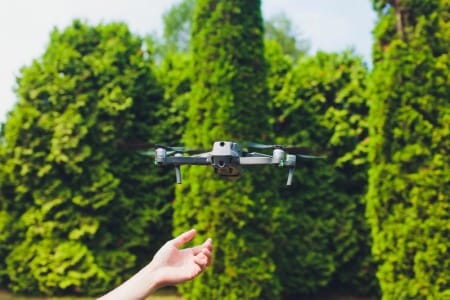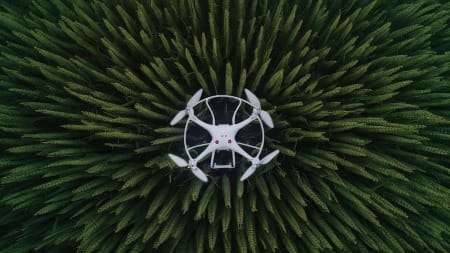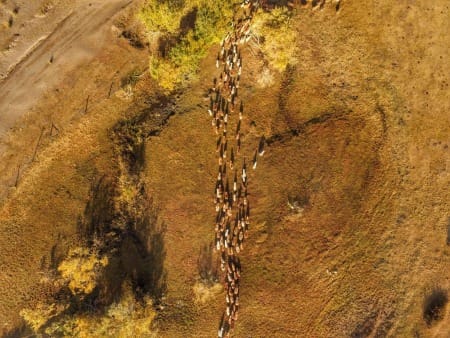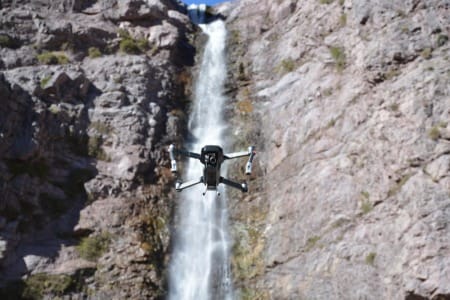1. Introduction to Drone Photography Jobs
1.1 What Are Drone Photography Jobs?
Drone photography jobs involve capturing high-quality aerial images and videos using drones, also known as unmanned aerial vehicles (UAVs). These jobs span multiple industries, from real estate and construction to marketing and environmental conservation. As the demand for compelling visual content grows, businesses and individuals increasingly turn to drone photographers to deliver unique perspectives that traditional photography cannot provide.
1.2 Why Drone Photography Is a Growing Career Path
Drone photography jobs are on the rise due to technological advancements, making drones more accessible and affordable. Industries like real estate rely heavily on aerial imagery to showcase properties, while tourism brands use drones to capture breathtaking landscapes. In addition, sectors such as construction and agriculture use drones to monitor progress and gather data efficiently. With this expanding scope, drone photography has become an appealing career path for creatives and tech enthusiasts alike.
Another factor driving growth is the increasing popularity of drones among hobbyists. Many people who start flying drones for fun quickly realize their career potential, especially as they develop skills in navigation and photography. The ability to turn a passion into a profession adds to the allure of drone photography jobs.
1.3 Benefits of Starting a Career in Drone Photography
Pursuing drone photography jobs offers several advantages. First, it provides a flexible work schedule, as many drone photographers operate as freelancers. You can choose projects that align with your interests, whether that's real estate, events, or nature. Second, the job market for drone photography is relatively new, meaning there’s less competition compared to more traditional photography fields.
Drone photography also allows you to tap into industries you might not have considered, such as surveying, advertising, or even film production. The versatility of drone applications means you can explore different niches and find your unique specialization.
Finally, drone photography jobs often come with high earning potential. Businesses are willing to pay a premium for skilled drone operators who can deliver professional-quality results. This makes it a lucrative opportunity for individuals ready to invest time and effort into mastering the craft.
In summary, drone photography jobs are an exciting and rapidly growing field with diverse opportunities for creative professionals.
Affiliate Disclaimer
This blog post may include links to affiliate sites. If you click on an affiliate link and make a purchase, we may earn a small commission or receive other compensation at no extra cost to you. Please note that many of the links on our site are affiliate links. Our use of these links does not impact the products, services, or websites we recommend to you. This disclaimer covers all forms of communication with you, including our website, email, phone, social media, products, and other platforms.
2. Essential Skills and Tools for Drone Photography Jobs
2.1 Key Skills Needed for Drone Photography Success
Certain skills are essential to excel in drone photography jobs. First and foremost, strong drone piloting abilities are critical. You need to understand how to control the drone smoothly and efficiently while adhering to safety protocols. This includes learning how to manage flight patterns, stabilize the drone for clear shots, and maneuver in challenging conditions like wind or tight spaces.

Photography skills are equally important. As a drone photographer, you must understand lighting, composition, and framing from an aerial perspective. Unlike traditional photography, drone photography often requires capturing vast landscapes, structures, or dynamic subjects in motion. Knowing how to adjust your camera settings, such as ISO, aperture, and shutter speed, will help you produce professional-grade images and videos.
Problem-solving skills are also vital for drone photography jobs. Unexpected challenges like technical issues, weather changes, or sudden no-fly zones require quick thinking and adaptability. Communication and interpersonal skills are beneficial, too, especially when working directly with clients to meet their specific needs.
2.2 Equipment Essentials for Drone Photography Jobs
The right equipment is a cornerstone of success in drone photography jobs. A high-quality drone with a reliable camera is your primary tool. Popular models like the DJI Mavic 3 or the Autel EVO Lite+ offer advanced features such as high-resolution cameras, long battery life, and obstacle avoidance systems, which are crucial for professional work.
In addition to the drone itself, you’ll need spare batteries, as aerial photography can drain power quickly. Investing in a sturdy carrying case protects your equipment during transport. A set of ND (neutral density) filters can help you control light exposure, ensuring better image quality in bright conditions.
A high-capacity memory card is also essential for storing large image and video files. Consider a card with at least 128GB of storage and high-speed write capabilities to avoid delays during shoots. Additionally, a reliable laptop with editing software like Adobe Lightroom or Premiere Pro allows you to refine your footage and deliver polished results to clients.
2.3 Getting Certified: FAA and Local Regulations
One of the most critical steps for those pursuing drone photography jobs is obtaining proper certification. In the United States, the Federal Aviation Administration (FAA) requires drone operators conducting commercial work to hold a Part 107 Remote Pilot Certificate. This certification demonstrates that you understand airspace regulations, safety protocols, and operational limits.
To earn your certification, you must pass the FAA’s Aeronautical Knowledge Test. Study materials are widely available online, and preparation courses can help you master topics such as weather conditions, drone maintenance, and emergency procedures.
It’s also crucial to research local regulations if you plan to operate outside the U.S. Different countries have varying requirements, including flight permits, no-fly zones, and privacy laws. Staying compliant ensures you avoid legal issues and builds trust with clients who value professionalism.
By investing in the right skills, equipment, and certifications, you position yourself as a reliable professional in drone photography jobs. The combination of technical expertise, creative vision, and adherence to regulations will help you stand out in this competitive and rewarding field.
For Recreational Drone Pilots
Recreational pilots fly drones for personal enjoyment under Section 44809 of FAA rules. The following are required:
Take the TRUST Test: Recreational pilots must pass the Recreational UAS Safety Test (TRUST) and carry proof of passage when flying.
Drone Registration: Drones weighing more than 250 grams (0.55 pounds) must be registered with the FAA through the FAADroneZone. Registration costs $5 and is valid for three years.
Follow Community-Based Organization (CBO) Guidelines: Pilots must adhere to safety rules set by an FAA-recognized CBO, such as maintaining visual line-of-sight and yielding to manned aircraft.
Airspace Awareness: Use tools like the FAA’s B4UFLY app to check airspace restrictions and ensure compliance. Authorization is required for controlled airspace operations.
Altitude Limit: Drones must be flown at or below 400 feet in uncontrolled airspace

For Commercial Drone Pilots
Commercial pilots operate under Part 107 of FAA regulations. The requirements include:
Remote Pilot Certificate: Obtain a Part 107 license by passing the aeronautical knowledge test (Unmanned Aircraft General – Small). Applicants must be at least 16 years old, able to read and write English and pass a TSA background check.
Drone Registration: All drones used for commercial purposes, regardless of weight, must be registered with the FAA.
Operational Rules:
· Maintain visual line-of-sight unless a waiver is granted.
· Fly at or below 400 feet unless operating near structures.
· Yield to manned aircraft.
· Operate at speeds under 100 mph and avoid flying over people or moving vehicles without proper waivers.
Night Operations: Allowed without a waiver if equipped with anti-collision lights visible for three miles.
Remote ID Compliance: Starting March 16, 2024, all drones weighing 250 grams or more must comply with Remote ID requirements. This involves broadcasting information such as drone ID, location, altitude, and operator location.
3. Top Drone Photography Jobs You Can Start Today
3.1 Real Estate Drone Photography
Real estate is one of the most lucrative industries for drone photography jobs. Realtors and property developers increasingly rely on aerial footage to showcase properties from unique perspectives. Drones can capture stunning overhead views of large estates, highlight nearby amenities, and create dynamic walkthroughs of homes. Aerial imagery is especially effective for luxury properties and commercial developments, where traditional photography often falls short.

To succeed in this niche, focus on delivering visually compelling images and videos that emphasize space, design, and location. A good starting point is reaching out to local real estate agencies or listing your services on platforms like Zillow’s Photographer Program.
3.2 Aerial Wedding and Event Photography
Weddings and events are another growing category for drone photography jobs. Couples and event planners increasingly seek aerial footage to capture breathtaking moments, such as outdoor ceremonies, receptions, or large gatherings. The unique vantage point provided by drones adds a dramatic and cinematic quality to event photography, making it a popular option for high-end celebrations.
Working in this niche requires careful planning and discretion. Drones can be intrusive if not operated skilfully, so knowing how to fly quietly and safely in crowded environments is critical. Building a portfolio of past events will help you attract clients who value creativity and professionalism.
3.3 Construction Site Monitoring and Documentation
Drone photography jobs in construction are in high demand. Contractors and project managers use drones to document site progress, monitor safety compliance, and create reports for stakeholders. Aerial photography allows for a comprehensive view of large-scale projects, including high-rise buildings, bridges, and infrastructure developments.
This niche requires more than artistic skills; you’ll need technical expertise to interpret site layouts and provide actionable insights. Learning to use mapping software, such as Pix4D or DroneDeploy, can increase your value in this field. Establishing partnerships with construction firms or engineering consultancies can lead to consistent, long-term work.
3.4 Drone Photography for Travel and Tourism
The travel and tourism industry offers abundant opportunities for drone photography jobs. Resorts, tourism boards, and travel brands are eager for captivating aerial imagery to promote destinations. Drones can showcase scenic landscapes, cultural landmarks, and adventure experiences in ways that resonate with travelers.
To break into this market, build a portfolio of travel-focused drone photography. Collaborate with local businesses, such as hotels or tour operators, to create promotional content. Social media platforms like Instagram are powerful tools for showcasing your work and attracting new clients in the travel industry.
3.5 Wildlife and Environmental Conservation Projects
For those passionate about nature, wildlife, and environmental conservation offer fulfilling drone photography jobs. Drones play a critical role in documenting ecosystems, tracking wildlife, and monitoring environmental changes. Organizations use this data for research, awareness campaigns, and conservation planning.
While artistic photography is valued, technical skills like data collection and analysis may be required in this niche. Working with NGOs, research institutes, or government agencies can lead to meaningful projects that combine creativity with a positive impact.
Drone photography jobs span diverse industries, offering creative professionals multiple paths to success. By identifying your niche and tailoring your services, you can start your journey in this dynamic and rewarding career today.
4. How to Find and Apply for Drone Photography Jobs
4.1 Leveraging Job Boards and Freelance Platforms
One of the easiest ways to find drone photography jobs is by using online job boards and freelance platforms. Websites like Upwork, Fiverr, and Freelancer frequently feature listings for drone-related projects. These platforms connect you with clients who need everything from real estate aerial shots to promotional videos for events.

When setting up your profile, make sure to highlight your drone skills, certifications, and experience. A polished portfolio showcasing your best work can significantly increase your chances of landing high-paying gigs. Additionally, platforms like Indeed and Glassdoor often post full-time or contract drone photography jobs, particularly with companies in real estate, marketing, or construction.
4.2 Networking with Local Businesses and Agencies
Networking is another effective way to find drone photography jobs. Many businesses and organizations may not know they need drone services until they see your work. Approach local real estate agencies, wedding planners, or marketing firms with examples of how drones can elevate their projects. For instance, real estate agents often need aerial shots to showcase properties, while event planners might want dramatic footage of weddings or large gatherings.
Joining local photography or drone clubs can also help you make connections within your community. Networking with other photographers or drone enthusiasts can lead to referrals and collaborations that expand your opportunities. Additionally, attending industry events or expos allows you to meet potential clients face-to-face and showcase your expertise.
4.3 Building a Strong Portfolio to Stand Out
A strong portfolio is essential for securing drone photography jobs. Potential clients want to see what you can deliver before hiring you. Focus on showcasing a variety of work that demonstrates your versatility and creativity. Include projects from different industries, such as real estate, events, construction, and travel, to appeal to a broader range of clients.
If you’re just starting out, consider working on personal projects or volunteering for local businesses to build your portfolio. For example, you could create a series of aerial landscape photos of your city or offer free services to a nonprofit organization. Once you have a collection of high-quality work, organize it into an online portfolio using platforms like Squarespace or Adobe Portfolio.
Don’t forget to include video content, as many drone photography jobs involve both photos and videos. Editing your footage professionally with software like Final Cut Pro or Adobe Premiere Pro can elevate your portfolio and show clients your commitment to quality.
4.4 Marketing Yourself Effectively
Marketing plays a key role in finding drone photography jobs. Use social media platforms like Instagram, YouTube, and LinkedIn to promote your work. Posting consistent content, such as behind-the-scenes footage or completed projects, can help you build a following and attract clients.
Invest in a professional website that highlights your services, portfolio, and contact information. Optimize it for search engines by using relevant keywords like drone photography jobs to improve your visibility online. Additionally, ask satisfied clients for testimonials and referrals, as word-of-mouth recommendations can be one of the most powerful tools in securing new work.
By combining online platforms, networking efforts, and effective marketing, you can position yourself as a sought-after professional in the world of drone photography jobs.
5. Tips for Succeeding in Drone Photography Jobs
5.1 Mastering Advanced Drone Techniques
To stand out in drone photography jobs, you need to go beyond basic flying skills and master advanced techniques. For example, learning cinematic movements like the orbit shot or the reveal shot can add a dramatic flair to your videos. These techniques require precise control and a deep understanding of how to maneuver the drone smoothly to capture professional-grade footage.

Experimenting with different altitudes and angles can also elevate your work. A fresh perspective, such as low-altitude flyovers or high, wide-angle panoramas, can make your projects more visually engaging. Incorporating automated flight modes available on modern drones, like waypoint navigation or active tracking, allows you to focus more on framing the perfect shot while the drone handles the movement.
Consistency is key, so practice regularly to refine your skills. The more comfortable you are with advanced techniques, the better equipped you’ll be to meet client expectations in a competitive market.
5.2 Keeping Up with Industry Trends
Drone photography jobs are constantly evolving as technology and client demands change. Staying up-to-date with the latest industry trends can help you remain relevant and competitive. For instance, many clients now expect high-quality 4K or even 8K video resolution, which means investing in a drone capable of delivering top-tier results.
Another trend is the use of drones for 3D mapping and modeling, especially in industries like construction and surveying. Familiarizing yourself with software like Pix4D or DroneDeploy can open up new opportunities and expand your skill set. Similarly, understanding post-processing trends, such as HDR photography or advanced color grading, can help you deliver polished and impactful results.
Following blogs, forums, and social media groups focused on drones can keep you informed about emerging tools and techniques. Attending workshops, webinars, or trade shows also provides valuable insights and helps you connect with other professionals.
5.3 Building Long-Term Client Relationships
Success in drone photography jobs is not just about delivering great visuals; it’s also about creating strong relationships with clients. Satisfied clients are more likely to provide repeat business and recommend your services to others.
Start by understanding your client’s needs in detail. Whether they want stunning real estate images or precise construction progress shots, tailoring your approach to their specific goals shows professionalism and dedication. Regular communication throughout the project ensures you’re aligned with their expectations and can address any concerns promptly.
Going the extra mile, such as offering quick turnaround times or providing additional edits, can leave a lasting positive impression. After completing a project, follow up with your clients to thank them for their business and ask for feedback. Testimonials from happy clients are invaluable for building credibility and attracting new opportunities.
5.4 Staying Professional and Reliable
Professionalism is a cornerstone of success in drone photography jobs. This includes showing up on time, being prepared with all necessary equipment, and adhering to safety regulations. Clients appreciate reliability and know they can count on you to deliver quality work on schedule.
Maintaining your equipment is also crucial. Regularly inspect your drone, update its firmware, and keep backup batteries on hand to avoid unexpected interruptions during shoots. Developing a checklist for pre-flight and post-flight procedures can help ensure smooth operations.
By continuously refining your skills, staying informed about industry advancements, and prioritizing client satisfaction, you can build a thriving career in drone photography jobs. These practices not only enhance your reputation but also open doors to exciting new opportunities in this growing field.
6. Conclusion
6.1 Starting Your Journey in Drone Photography Jobs
Drone photography jobs offer an exciting blend of technology and creativity, making them an ideal career path for those passionate about capturing unique perspectives. With the growing demand across industries like real estate, events, construction, and tourism, there are abundant opportunities to turn your drone skills into a rewarding profession.
The first step is to build a strong foundation by mastering drone operation, honing your photography skills, and understanding the specific requirements of each niche. Investing in quality equipment, obtaining necessary certifications, and developing a diverse portfolio is critical to establishing yourself as a reliable and professional drone photographer.
Starting small, such as working on personal projects or collaborating with local businesses, can help you gain experience and confidence. As you grow your expertise, you’ll find more opportunities to showcase your talent and attract higher-paying clients.
6.2 Final Thoughts and Next Steps
Success in drone photography jobs requires dedication, adaptability, and a willingness to keep learning. Staying current with industry trends, upgrading your gear, and continuously refining your craft will help you stay ahead in this competitive field. Networking with other professionals and effectively marketing your services can also open doors to new clients and exciting projects.
Most importantly, don’t be afraid to explore different niches to find what aligns with your interests and strengths. Whether you’re drawn to artistic landscapes, fast-paced events, or technical applications like mapping, drone photography jobs offer something for everyone.
By taking consistent steps to grow your skills and reputation, you can build a thriving career that combines your passion for drones with the opportunity to make a meaningful impact across various industries. Start today, and the sky’s the limit!
Thank you for visiting our site and being part of this journey with us! We rely on the generous support of visitors like you to continue providing high-quality. Your donation, no matter the size, helps us maintain the website and create more valuable resources for everyone.


